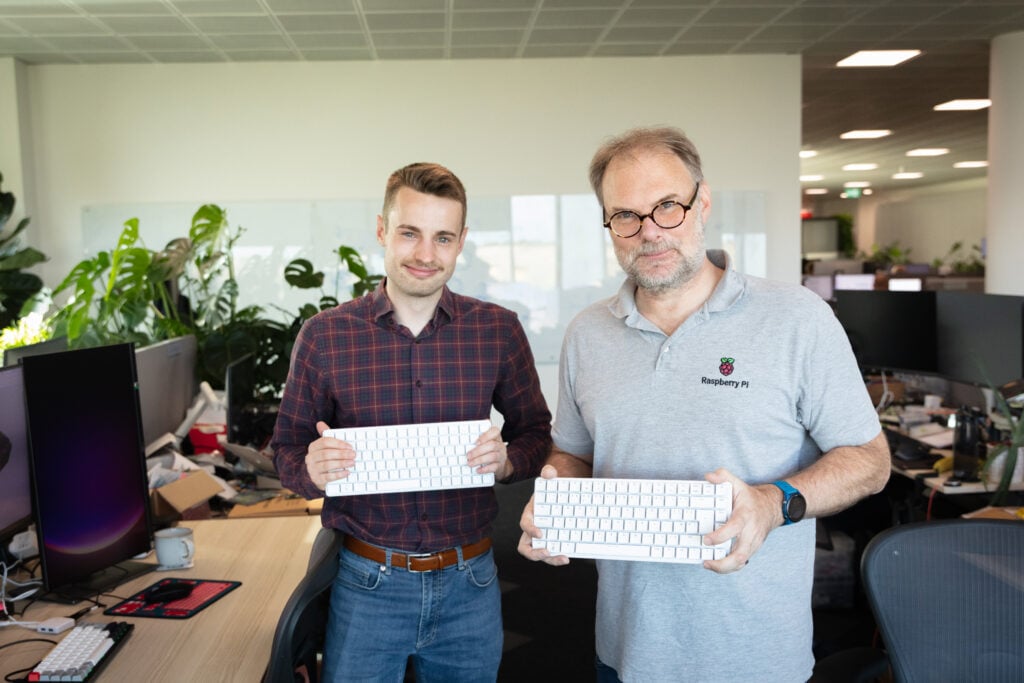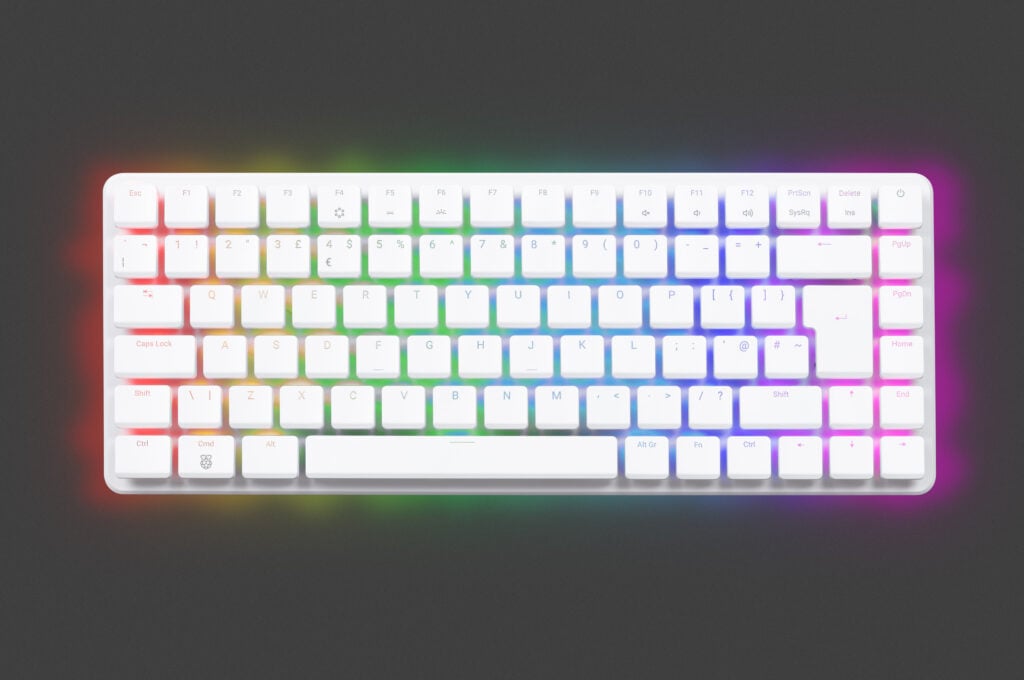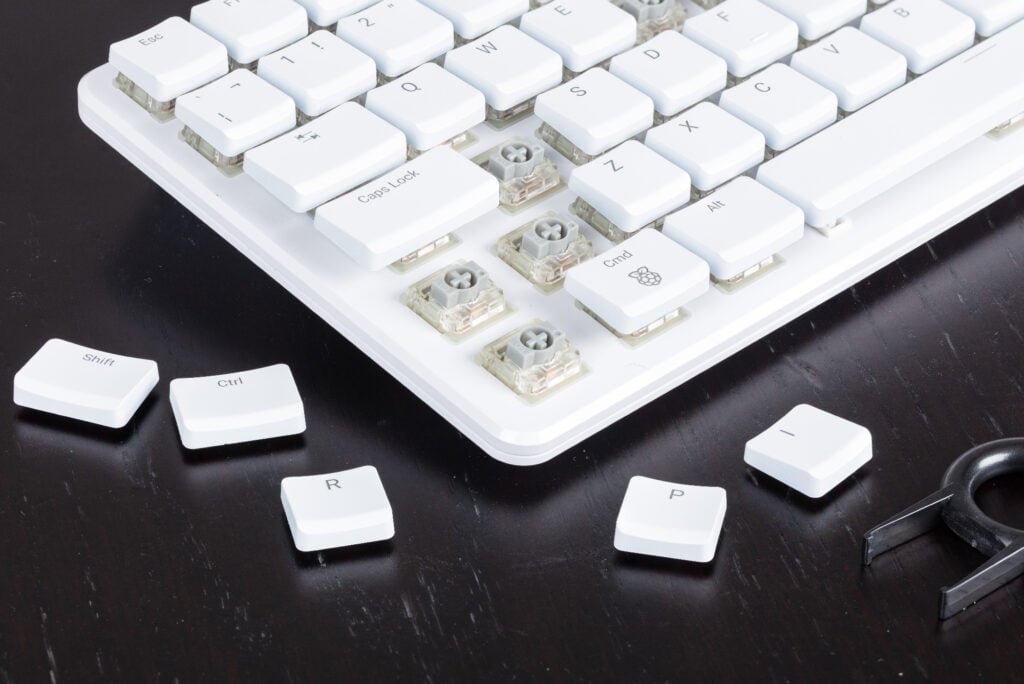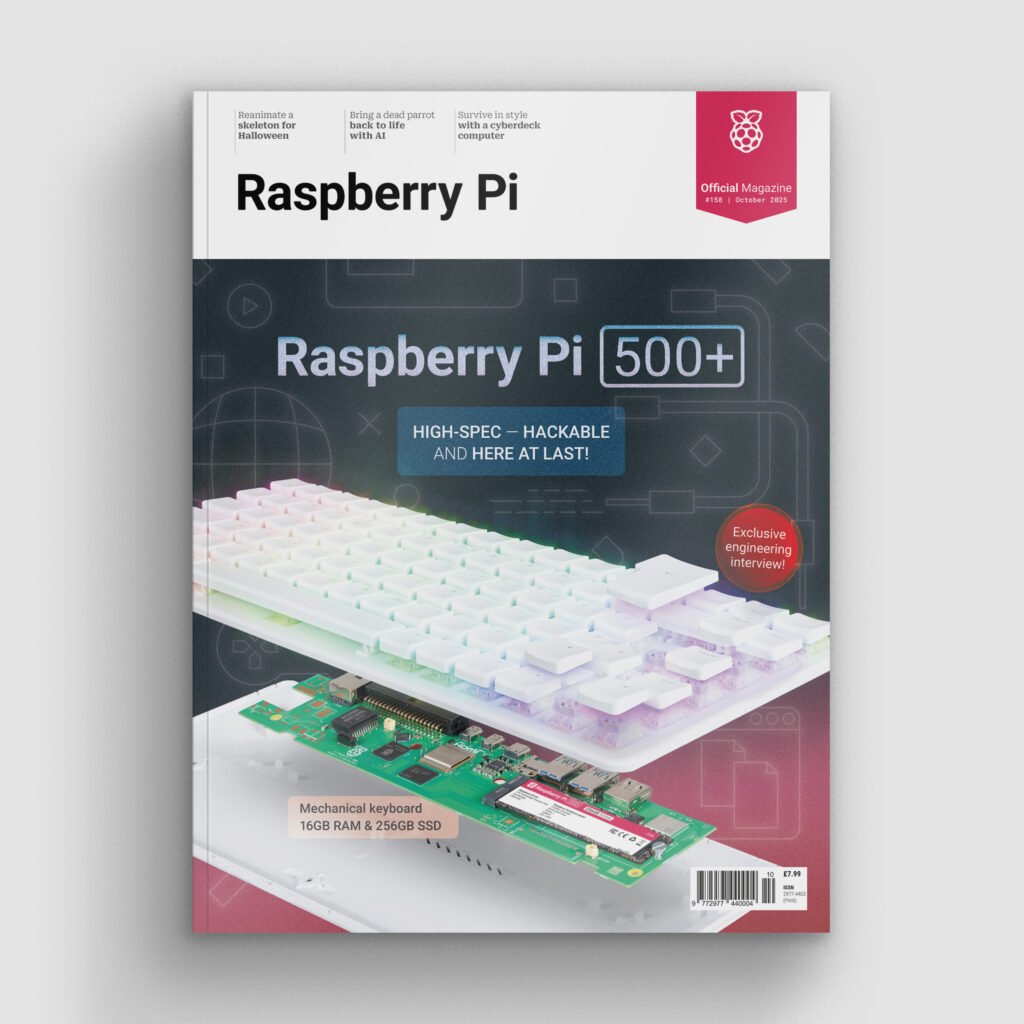Meet the engineers behind Raspberry Pi 500+
In issue #158 of Raspberry Pi Official Magazine, we get the inside story from the engineers who made our newest all-in-one PC.
Hardware engineers Simon Martin and Chris Martin have been beavering away on Raspberry Pi 500+ for years, through a process of iteration that’s seen a total of ten factory trips to China, six PCB revisions, and 3000 units that got built with the wrong kind of Return key. What sounds like a simple task — adding a mechanical keyboard, SSD, and more RAM to the existing Raspberry Pi 500 — turned out to be far more involved than anyone thought, and it’s resulted in a device that we think is absolutely brilliant. Thanks, gentlemen!

RPOM: Simon, Chris: what did you do on Raspberry Pi 500+?
Simon Martin: I’m a senior principal engineer at Raspberry Pi, and I’m responsible for electronics and electromechanical design. I design a lot of PCBs. I’m responsible for making sure it all clips together. I work on cameras, and I worked on Raspberry Pi Zero 2.
Chris Martin: I’m a hardware engineer. I work directly with Simon most of the time, so I do a lot of different things, but I’m a mechanical engineer. I was fairly heavily involved in the early stages while I was doing a year-long internship with Simon, then came back after I’d finished university. I did quite a few of the revisions of the keyboard PCB, and I’ve done most of the software for the keyboard as well.
Most of my work from March 2023 to August 2023 was doing very early prototypes of this. We actually did a PCB and 3D print, and originally it was going to be on the Raspberry Pi 500 base. We decided actually it was worthwhile doing a new base to get the screws together so you could access the SSD.
RPOM: Where do you start when designing something like this: with a Raspberry Pi 5, or a Raspberry Pi 500, or do you start with the keyboard and fit the other components around that?
SM: Yes, I started with a Raspberry Pi 5 schematic and layout. I picked up an early board design back in 2022 and modified it to look roughly like the board in Raspberry Pi 400. I had a sketch of where all the connectors and ports were going to go and laid out the design. It was easy to design a prototype board with the design resources available. In fact, we had a working prototype with 3D-printed plastics before Raspberry Pi 5 was launched.
The next stages were the difficult part. We had to design the keyboard and housing so that they were easy to fit together and easy to manufacture. The company decided to launch the low-cost Raspberry Pi 500 first, back in 2024. This took Raspberry Pi 500+ on a different path for a while. The bare PCB is common between them, so much of the work was already done. We just needed to get the new keyboard upper ready in time, plus a scramble to get compliance, production tests, marketing materials, and all the artwork completed in time.

CM: The base kind of followed on from the design of the keyboard. With the size of Raspberry Pi 500, you can’t get a good keyboard layout with mechanical key switches, because on 500 you have smaller keys, especially in the arrow keys. Basically, our limitation was the 1.75 width Shift key.
SM: And the other thing is, as Chris said, that you can have an external NVMe just by having USB 3.0. It’s just as fast to boot from an external drive as it is to boot from that internal drive. So you could boot from the external drive and have a Hailo [AI accelerator] inside, which would be kind of cool. There’s no camera port, though, so there’s no image processing — you’d have to have a USB camera plugged into it instead.
RPOM: You’ll have seen the people online asking for a mechanical keyboard version of 400/500. Did this have any influence in the decision to make Raspberry Pi 500+?
SM: Yes, this was a strong influence. We took on the feedback from users who wrote in to us. There were a lot of mentions about mechanical keyboards. Other feedback was that it needed an NVMe port so you can plug in an M.2 SSD. Some did not like the USB ports on the left. Some felt it did not have enough RAM. We took all of this feedback and designed it in.
Raspberry Pi 500 and 500+ were originally intended to be released at the same time, and they used the same PCB. So a few people who opened up Raspberry Pi 500 saw that there were features on the board that weren’t used in 500 and correctly deduced that they were intended for a future product — including the NVMe drive. When they were going to be launched at the same time, that didn’t matter, but we’ve had to keep tight-lipped about Raspberry Pi 500+, because nobody knew when it was coming.
RPOM: Mechanical keyboard people are incredibly detail-obsessed, so I guess there’s been a lot of thought gone into the choice of key switches?
SM: The key switches are Gateron KS-33, which is a good brand — they’re reliable up to 60 million cycles, so the spray paint will have worn off the key caps long before the key switch fails. So it’s just as well that the keycaps are replaceable!
The easiest way of describing them is that they are Cherry Blue–style, which is clicky. There are all sorts of different variables of clickiness and travel and rebound. It’s got a little spring in there which makes the clicks. Within the same line-up, they have Red, which is linear, Brown is tactile, and Blue is clicky.

CM: Some keyboards are really bad for resonance — the click of the keys echoes around inside the keyboard and it makes a rattling sound. Raspberry Pi 500+ is quite good for resonance. With some of the fancy mechanical keyboards, they have big layers of foam in them to stop rattles and echoes. That’s what mechanical keyboard people get into now — layers of foam, and switches suspended by rubber and things like that. Raspberry Pi 500+, by chance, is naturally quiet without us having to shape the sound profile. I think the fact that we have a metal plate in there and plastic around it helps.
RPOM: Whose baby is Raspberry 500+? I remember talking to Eben about 500+ about a year ago and he seemed ridiculously excited by it.
SM: Eben always wanted to make a computer in a keyboard because it is the way that computers were introduced to beginners in the 1980s and early 1990s. I also started programming when a Commodore 64 arrived under the Christmas tree in 1987.
The first product in the series was Raspberry Pi 400 in 2020. We then evolved it into Raspberry Pi 500 in 2024 and now Raspberry Pi 500+ in 2025. We have all been really excited about 500+ because it is the flagship. I hope others are as excited as I was when I switched on my first computer.
You can find the full interview feature in issue 158 of Raspberry Pi Official Magazine.
Raspberry Pi Official Magazine #158 out NOW!
You can grab the latest issue right now from Tesco, Sainsbury’s, Asda, WHSmith, and other newsagents, including the Raspberry Pi Store in Cambridge. It’s also available from our online store, which ships around the world. And you can get a digital version via our app on Android or iOS.

You can also subscribe to the print version of our magazine. Not only do we deliver worldwide, but people who sign up to the six- or twelve-month print subscription get a FREE Raspberry Pi Pico 2 W!
The post Meet the engineers behind Raspberry Pi 500+ appeared first on Raspberry Pi.
from News - Raspberry Pi https://ift.tt/TqwdEL4
Comments
Post a Comment